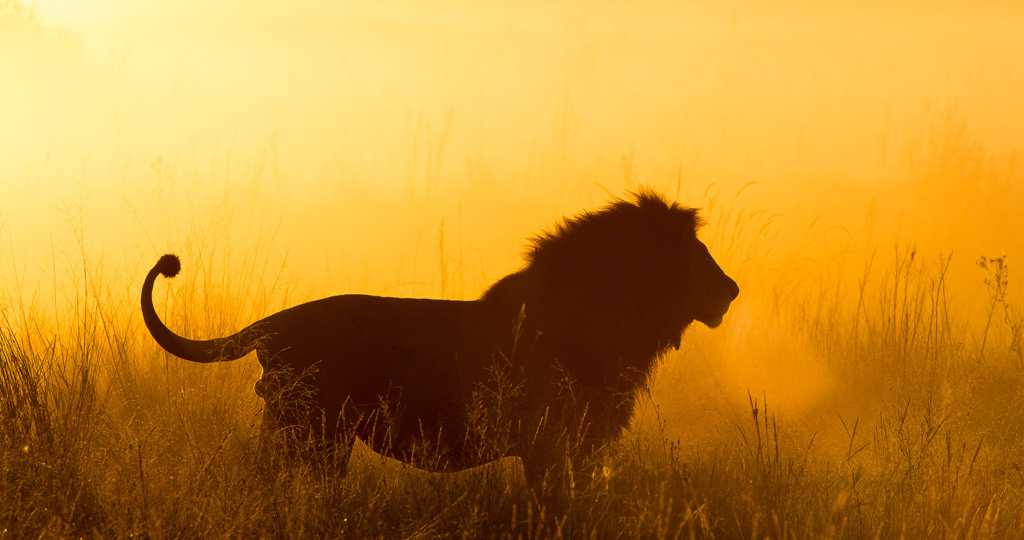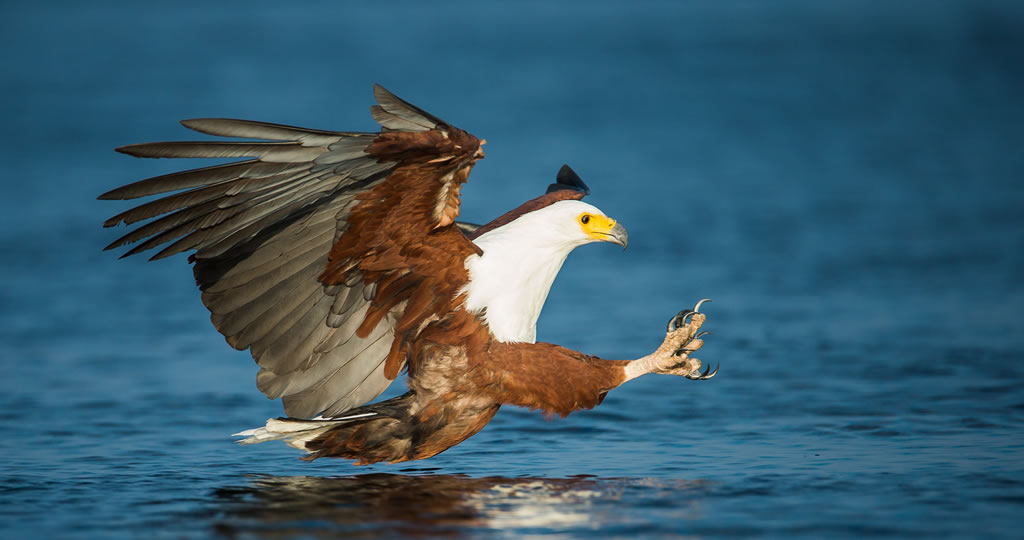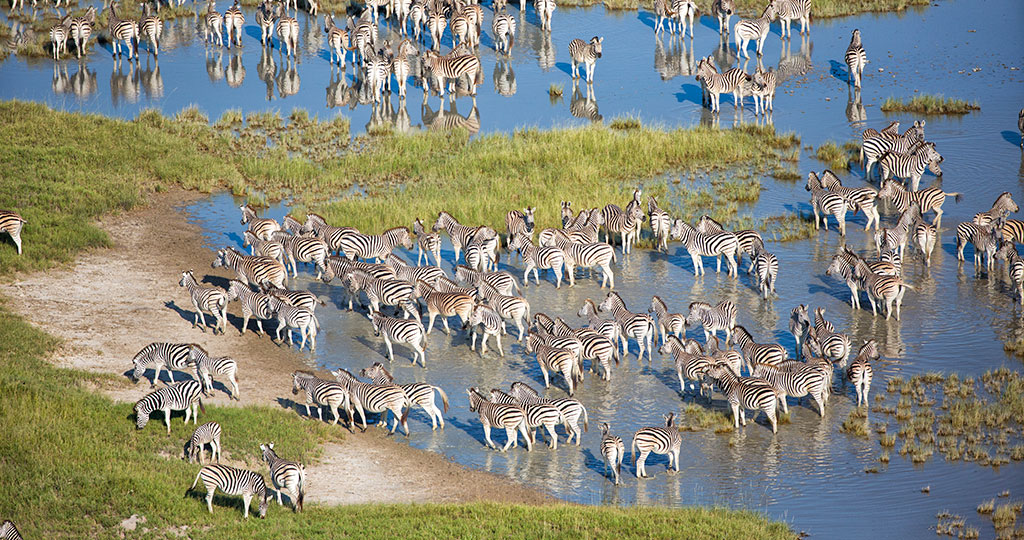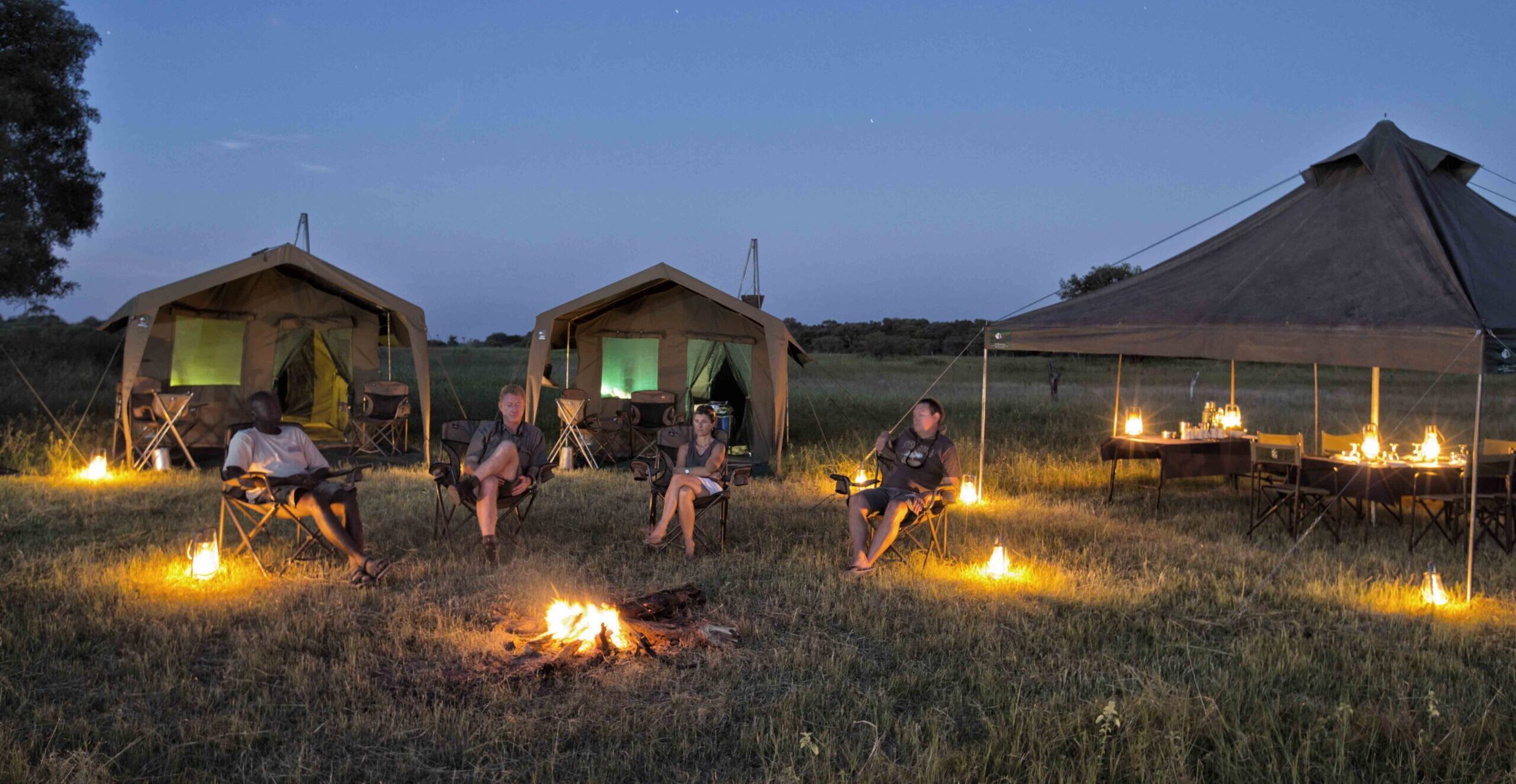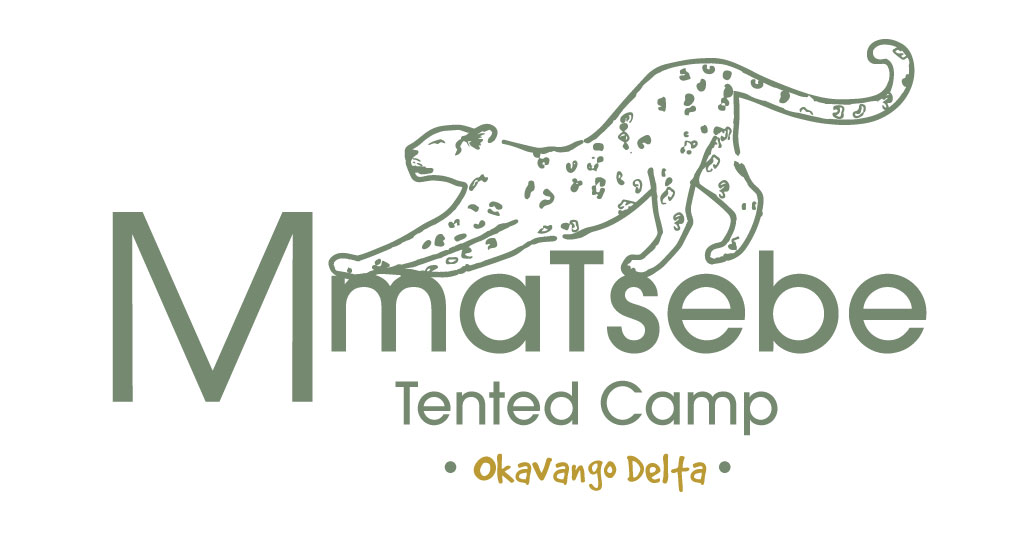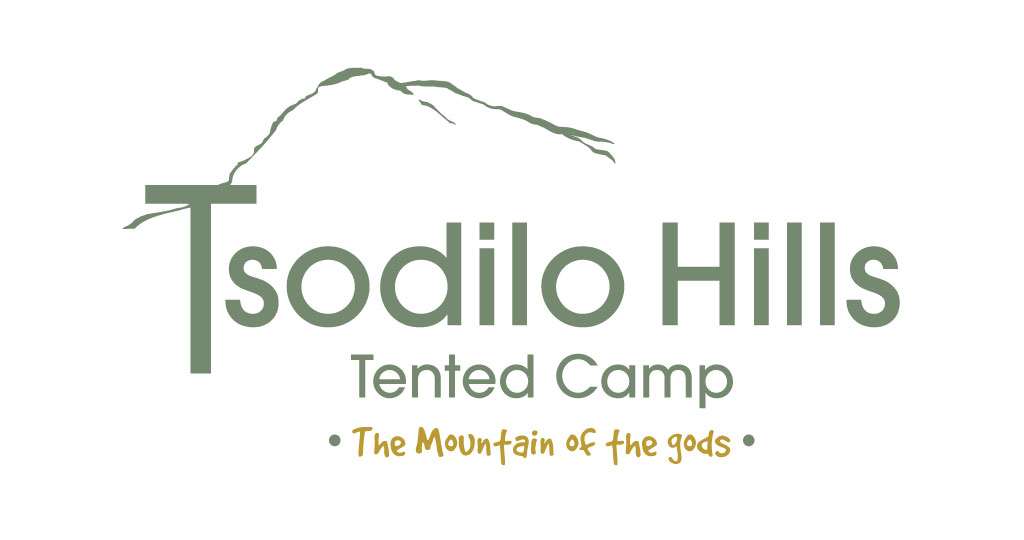Makgadikgadi Pans National Park
If you were able to travel back in time tens of thousands of years, the area of northern Botswana known as the Makgadikgadi Pans would appear radically different to how it looks today. It was once a vast lake, larger than Switzerland. This immense body of water was surrounded by a region of swamps and wetlands that provided an ideal habitat for early humans, with abundant food and water.
Visit the area now and instead of a giant lake, you’ll find something no less spectacular: a series of dry salt pans that were once the lakebed. Although the pans appear arid and inhospitable, enough water reaches them (via the Nata and Boteti Rivers and from seasonal rains) that they support large areas of summer savannah grassland, and a fascinating array of animals and birds which have adapted to life in this challenging environment.
The Pans are actually a collection of salt pans, which can be found in the Kalahari to the south-east of the Okavango Delta. The most famous of the pans are Sua Pan, Nxai Pan and Ntwetwe Pan, and many of the most important habitats are protected by the 3 900km2 Makgadikgadi Pans National Park.
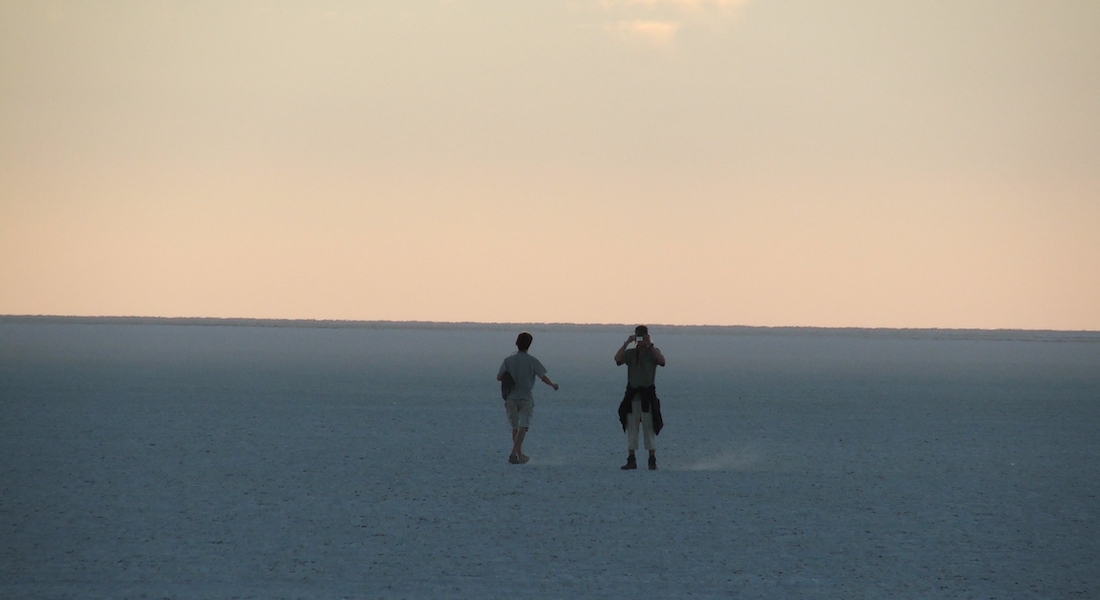
How to get there
Makgadikgadi Pans can be reached by 4×4 vehicle from Maun – the main entrance to the national park is roughly halfway to the small town of Nata, and 45km west of Gweta. There is a second entrance to the national park at Xhumaga, about 48km to the south-west.
As with all journeys in the remoter parts of northern Botswana, we would advise you to carry spare fuel and water, and to use a GPS device in addition to maps. Always let someone know where you are heading, and when you expect to arrive.
At the main gate of Makgadikgadi Pans National Park, you’ll be required to pay the entrance fee of BWP120 per person, along with BWP50 per day for your vehicle if it is not registered in Botswana. These fees are paid to the Department of Wildlife and National Parks and go directly towards funding conservation in Botswana, so think of them as an investment!
When to visit
To experience the otherworldly landscape of the gleaming white salt pans, the dry season is your best bet (from May to September). The sense of space is increased by the fact that you can see the curvature of the Earth! In the dry season, activities like sleep-outs in the pans are much easier to arrange and enjoy.
A summer highlight is the migration of huge herds of zebra and wildebeest to the north of the pans – so many animals are involved that this is believed to be the second largest migration of large mammals in Africa. The zebra – which are Botswana’s national animal – make the long trek from the Okavango Delta to the Pans in search of fresh grazing. As it is not nearly as well-known as events in the Serengeti and Masai Mara, this is sometimes referred to as the “secret migration”.
The weather in the Makgadikgadi Pans is similar to the rest of northern Botswana, with two main seasons each year. When it rains, many roads and tracks can become very hard to navigate as they turn muddy almost instantly making the pans themselves inaccessible in the rainy season (summer – that is, from October to April).
Like all arid areas, the Pans can be very fresh in the evenings (and especially) the early mornings. Daily variations in temperature are particularly noticeable in the dry season, when the lack of cloud cover sees a lot of heat lost from the ground (but the displays of stars are spectacular).

Wildlife of the Makgadikgadi Pans National Park
When the summer rains transform the Pans into lush grasslands, they attract large herds of herbivores (especially zebra, wildebeest and also itinerant elephant). When the Pans temporarily fill with water, they also attract huge numbers of migrating birds, with lesser flamingos being the most obvious and photogenic examples.
The title of local rock stars undoubtedly belongs to the meerkats – some colonies have become habituated to humans, which means that you can spend time watching them go about their daily routine of sunbathing, grooming and ganging up on snakes and scorpions.
The largest living things in the Pans by far are the massive, ancient baobab trees. In this flat landscape, the most famous of these were landmarks used by explorers like David Livingstone to find their way. Baines’ Baobabs, a cluster of seven of these trees (actually giant succulents, if we’re being pedantic) stand in Kudiakam Pan while the most iconic of them all, Chapman’s Baobab, lived for an estimated 1 000 years before falling in 2016. (As no-one was there when this happened, it’s not known if it made a noise).
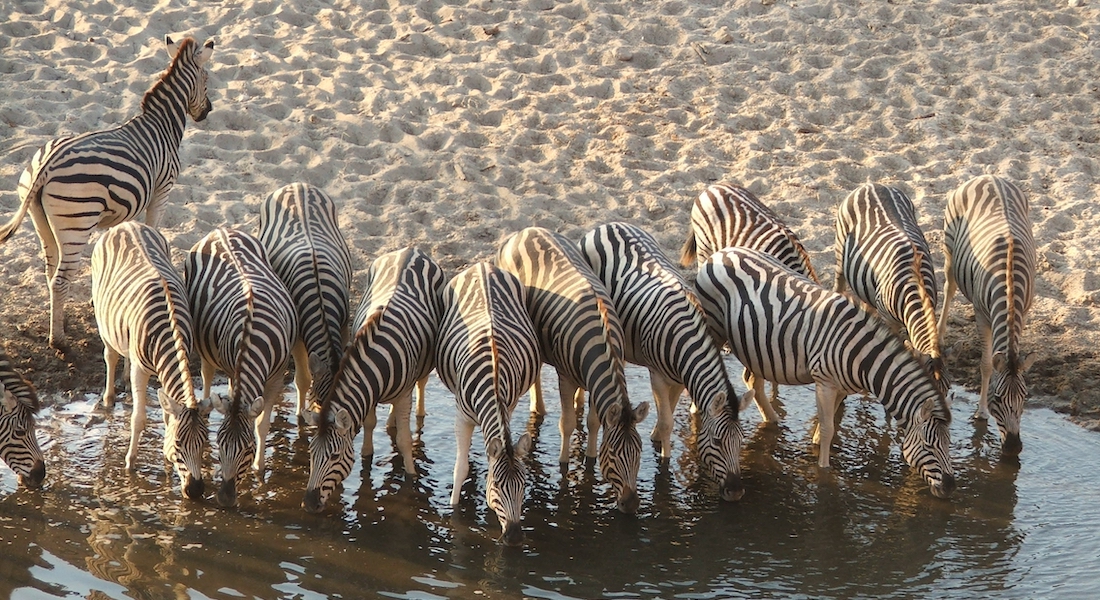
Nxai Pan
Nxai Pan is protected by its own national park which includes the famous Baines Baobabs. The park is 2578km2 in area and contains two campsites. Due to the limited camping opportunities available, booking in advance is essential.
Nxai Pan includes a variety of habitats, from mopane woodland to a busy waterhole and of course the extensive salt pan itself. Nxai Pan also undergoes a spectacular transformation when the annual rains arrive, and the herds of zebra and springbok that are attracted by the green flush also drop their young at this time, making for incredible vistas of hundreds if not thousands of animals.
Nxai Pan is a hotspot for cheetah sightings and unusual resident species such as bat-eared fox, ostrich and jackal are also often encountered, making Nxai Pan a wonderful year-round destination for visitors who are self-driving or accompanied by a guide.
Activities and Experiences
There are number of ways to experience the Makgadikgadi Pans, from game drives to guided walking safaris. Unique experiences include sleeping out on the Pans, under the stars, and visiting meerkat colonies. Birders and artists alike will find much to delight them, whether ticking off migrating species or recreating the paintings of Thomas Baines.
Why visit The Makgadikgadi Pans?
The Makgadikgadi Pans are quite unlike anywhere else in Botswana and make a fascinating counterpoint to time spent in the Okavango Delta of Chobe. The combination of unique landscapes and wildlife, plus the opportunity to witness huge herds on the move, makes the Pans an unmissable opportunity to (literally) expand your horizons.
